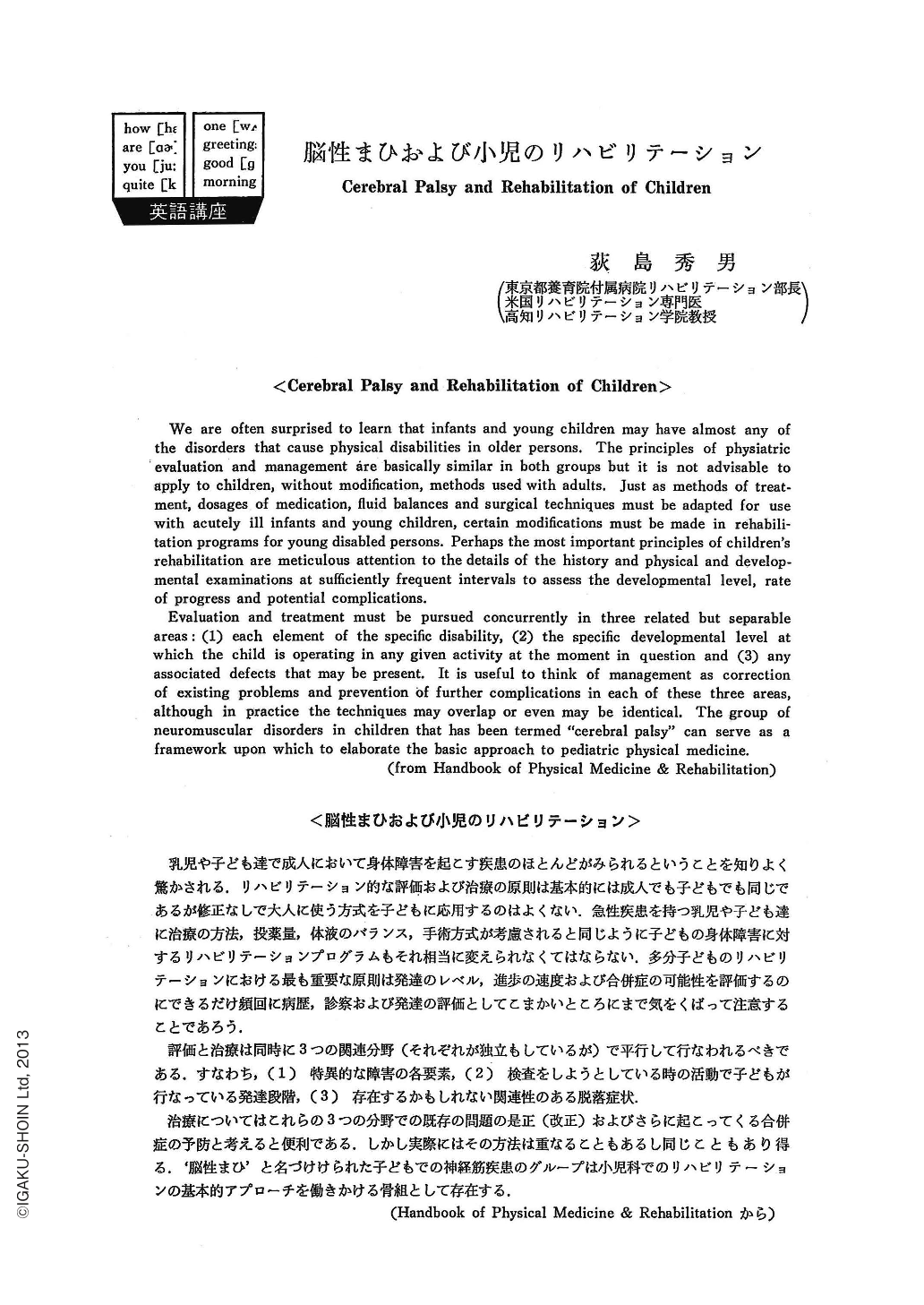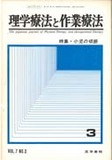Japanese
English
- 有料閲覧
- Abstract 文献概要
- 1ページ目 Look Inside
乳児や子ども達で成人において身体障害を起こす疾患のほとんどがみられるということを知りよく驚かされる.リハビリテーション的な評価および治療の原則は基本的には成人でも子どもでも同じであるが修正なしで大人に使う方式を子どもに応用するのはよくない.急性疾患を持つ乳児や子ども達に治療の方法,投薬量,体液のバランス,手術方式が考慮されると同じように子どもの身体障害に対するリハビリテーションプログラムもそれ相当に変えられなくてはならない.多分子どものリハビリテーションにおける最も重要な原則は発達のレベル,進歩の速度および合併症の可能性を評価するのにできるだけ頻回に病歴,診察および発達の評価としてこまかいところにまで気をくばって注意することであろう.
評価と治療は同時に3つの関連分野(それぞれが独立もしているが)で平行して行なわれるべきである.すなわち,(1)特異的な障害の各要素,(2)検査をしようとしている時の活動で子どもが行なっている発達段階,(3)存在するかもしれない関連性のある脱落症状.
We are often surprised to learn that infants and young children may have almost any of the disorders that cause physical disabilities in older persons. The principles of physiatric evaluation and management are basically similar in both groups but it is not advisable to apply to children, without modification,methods used with adults. Just as methods of treatment, dosages of medication, fluid balances and surgical techniques must be adapted for use with acutely ill infants and young children, certain modifications must be made in rehabilitation programs for young disabled persons. Perhaps the most important principles of children's rehabilitation are meticulous attention to the details of the history and physical and developmental examinations at sufficiently frequent intervals to assess the developmental level, rate of progress and potential complications.
Evaluation and treatment must be pursued concurrently in three related but separable areas: (1) each element of the specific disability, (2) the specific developmental level at which the child is operating in any given activity at the moment in question and (3) any associated defects that may be present. It is useful to think of management as correction of existing problems and prevention of further complications in each of these three areas, although in practice the techniques may overlap or even may be identical. The group of neuromuscular disorders in children that has been termed "cerebral palsy" can serve as a framework upon which to elaborate the basic approach to pediatric physical medicine.
(from Handbook of Physical Medicine & Rehabilitation)

Copyright © 1973, Igaku-Shoin Ltd. All rights reserved.


